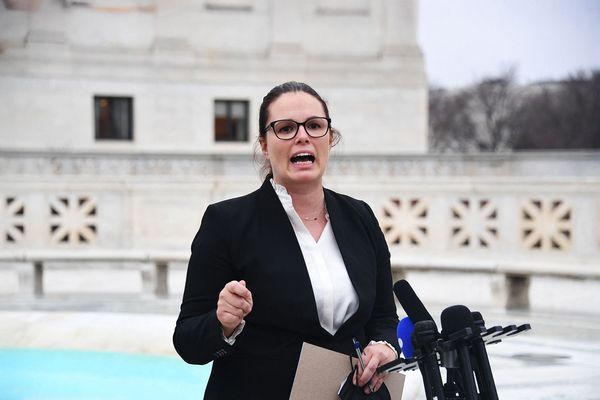Few US communities remain untouched by opioid overdoses: they killed an average of 224 people each day in 2022.
Opioid deaths have increased tenfold over the past 25 years. Among all addictions in 2021, the number of people in treatment for opioid addiction — for abuse of prescription opioids, heroin, and illegal fentanyl — was second only to alcohol abuse at reporting facilities.[1]
Since 2017, Congress has spent over $10.6 billion to address the opioid crisis, and lawsuits filed against drug manufacturers, distributors, and pharmacies have awarded nearly $50 billion to state and local governments. The JEC determined that determined that the opioid epidemic cost the US economy an estimated $1.5 trillion in 2020 alone.
What are opioids?
Opioids are a class of drug derived from poppies that are used to treat pain. They’re typically broken into three categories: illegal drugs like heroin; legal synthetic prescribed opioids like fentanyl which is 50 to 100 times more potent than heroin[2], and legal semi-synthetic opioids like oxycodone, hydrocodone, codeine, and morphine.
When did the opioid epidemic begin?
The 2014 arrival of illicit fentanyl accelerated the crisis, but opioid addiction and deaths predate its appearance on the market.
Beginning in the 1990s, the opioid crisis unfolded in three distinct waves, moving from legal prescriptions like oxycodone and hydrocodone, to heroin, and eventually to the fentanyl that's responsible for the majority of opioid deaths today.
First wave
According to the CDC, the first wave of the opioid crisis began in the 1990s, with the increase in prescriptions opioids.
In the years prior to the first wave, opioids were prescribed sparingly. Physicians were generally cautious given their known risks, which include addiction.
In 1996, OxyContin was patented, and prescription opioids began being prescribed more frequently. Nonmedical use of prescription opioids increased, along with the illegal distribution of these drugs through “pill mills” — clinics, pharmacies, and clinicians inappropriately dispensing prescription medications.
Between 1999 and 2009, prescription opioid overdose deaths nearly quadrupled from 3,442 to 13,523.
Opioid prescription rates remained elevated throughout the 2000s, with the US average reaching a high of 81.3 prescriptions per 100 people in 2012 before dropping.
As of 2022, the national average was 39.5, but rates remain high in parts of the country, from 74.5 prescriptions per 100 people in Alabama to 24.3 per 100 people in Hawaii as of 2022.
By this point, the opioid epidemic had entered its second phase.
Get facts first
Unbiased, data-driven insights in your inbox each week
You are signed up for the facts!
Second wave
The second wave of the opioid epidemic began in 2010 with increased heroin abuse.
Heroin production increased across South Asia and in Latin America, flooding the US market — and its increasing numbers of opioid abusers — with a reliable, lower-cost supply.
Heroin overdose deaths increased five-fold between 2010 and 2017, from 3,036 deaths to 15,482.
By the time heroin overdose deaths began dropping in 2018, the opioid epidemic had transitioned to its third and most deadly phase.
Third wave
Beginning in 2013 and continuing today, the third wave of the opioid epidemic saw the sharp rise of fentanyl overdoses, with 73,838 deaths in 2022 alone.
Most fentanyl deaths result from illicit, non-pharmaceutical fentanyl, made with imported Chinese materials and manufactured primarily in Mexico. Fentanyl is often mixed with heroin, counterfeit pills, and cocaine, leading to unintentional overdoses when users unknowingly consume it.
Deaths from fentanyl far exceed overdoses from other opioids – nearly four times overdose deaths caused by prescription opioids (14,716) and heroin (5,871) in 2022.
Are people seeking treatment for opioid addiction?
In 2021, over 370,000 people received treatment for opioid addiction (second only to those seeking treatment for alcohol), according to the Substance Abuse and Mental Health Services Administration.
This number has dropped 45.4% since 2018’s high of 670,000.
According to a separate National Institute on Drug Abuse report, an estimated 2.5 million people aged 18 or older had opioid use disorder in 2021, with roughly one in five people receiving treatment.
The report also noted that Black adults, women, unemployed people, and individuals living in rural areas were substantially less likely to receive treatment .
Where does this data come from?
This data comes from the CDC Overdose Prevention page and subsequent datasets tracking the impact of the opioid epidemic over time, including the National Center on Health Statistics. Supplemental information comes from the Congressional Research Service’s report on the opioid crisis, a study from the Congressional Budget Office, and reports from the Substance Abuse and Mental Health Services Administration.
Learn more about the top causes of death in the US and fentanyl overdose rates, and get the data directly in your inbox by subscribing to our weekly newsletter.
[1] This data is based on treatment for primary substance abuse, meaning that other in treatment for other substances may also receive treatment for opioids as a secondary or tertiary substance. Substance use (primary, secondary, and tertiary) has associated fields for Route of administration, Frequency of use, Age at first use, and the TEDS Supplemental Data Set Item Detailed drug code.
[2] Throughout this article, we refer to fentanyl deaths in place of the CDC descriptor of “Other synthetic narcotics,” which is found under code T40.4 in the CDC Wonder database. We make this judgement since a majority of overdose deaths in this category are attributed to fentanyl by the National Institute on Drug Abuse.







